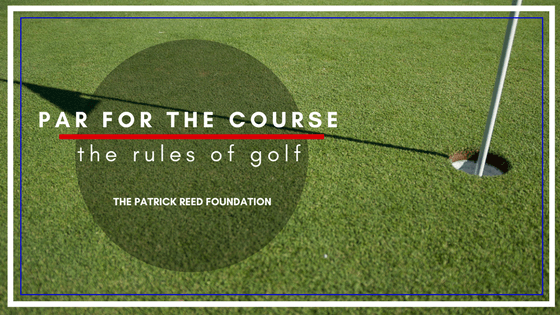Golf is a tricky sport. It’s certainly one that can be full of frustration if you haven’t mastered the art of concentration and persistence, but it’s one of the most rewarding activities once you master it. Golf is one of America’s favorite sports, so steeped in tradition that it’s still popular for kids and adults to learn how to play today. Before you hit the links for the first time, however, make sure you’re familiar with the game’s general rules.
Before the Round
Golf has no scoreboard, so a scorecard to keep an official tally of your round is kept as you complete each hole. Make sure you have one when you start playing! These will be signed to make your score official at the end of each round. You are allowed no more than 14 clubs in your bag, and you must be sure to identify which kind of balls you are playing. In addition to all of this, you have to have the proper gear to wear! Appropriate attire can change depending on the club or course you are playing, so be sure to check in with plenty of planning time left before you play.
Knowing the Score
If you really need to start from the beginning, knowing the rules before you take a trip to the green is important. Scoring can seem confusing in golf to anyone who doesn’t know the rules. Essentially, however, the rules are quite easy. Each time you swing your club at the ball, you earn a stroke. The goal is to get the ball into the hole in the least amount of strokes possible.
At the end of all of the rounds, you’ll add everything up and that will be your score for the day.
Now, where things get complicated is when you start averaging your score against “par.” This term is used to signify how many strokes it should take you to complete a round, varying against difficult of shot and course location. If your current hole has a par of 3, and it took you 7 strokes to get the ball into the hole, your score is reflected as 4-over-par, as it took you 4 more strokes than it should have taken you to complete.
Tee Shot
There are tee markers that denote where you should be teeing off from on every hole. Make sure you place your ball between these markers, and not in front of them. You are allowed to tee off from up to two club-lengths behind the markers, but not outside of the markers, or you will incur a two-stroke penalty. That’s right – there are penalties in golf just like there are penalties in any other sport!
Playing the Ball
You must play your shot as it lies, regardless of where the golf ball landed. You are not allowed to bend or break any living or growing hazards, except in taking a fair stance at the ball. If your ball lands in a bunker or in a water hazard, then make sure your club does not touch the ground before taking your downswing at the ball, or you will incur a penalty.
If you choose not to play the ball from a bunker or hazard, you will incur a one-stroke penalty and can either choose to take another shot from where your last stroke was, or take a drop from anywhere behind where the ball landed.
On the Green
Once you have reached the putting green, you may pick up and clean your the ball you’ve been using, as long as you mark and reset the ball exactly where it was. You can fix any divots in the green created by your ball, but you can’t fix any other marks or divots, such as damage made by spikes. If you’re playing with a caddy, remember to have them attend to the flag-stick while putting as well.
There are always more nuanced rules for more experienced players, but this quick guide will give you the foundation you need to enjoy your day on the green. For a more complete breakdown of the full rules of golf, check out the USGA’s official rules, and visit my site to learn even more about the great game of golf.

